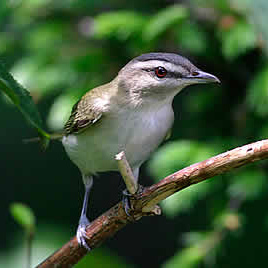 A recent incident in which over 400 birds were killed at AES' Laurel Mountain wind farm in West Virginia cast wind turbines in a negative light, and underscores a growing concern for wind farm owners and operators.
A recent incident in which over 400 birds were killed at AES' Laurel Mountain wind farm in West Virginia cast wind turbines in a negative light, and underscores a growing concern for wind farm owners and operators.
But the real culprit for the occurrence was dusk-to-dawn lighting – including a series of 250 W high-sodium lamps mounted on utility poles. However, the incident could have easily been avoided if the project's owners or consultants had taken steps to avoid the effect of non-flashing lights on migrating birds.
A similar incident occurred in May 2003, when 20 night-migrating songbirds were killed at the Mountaineer Wind Project on Backbone Mountain in West Virginia. A research team discovered that the birds had collided with the wind turbine, a fence and other structures associated with a substation located approximately 50 meters away.
After reporting the event to the U.S. Fish and Wildlife Service and the West Virginia Department of Natural Resources, the research team determined that the fatality event had been caused by night migrants, which were attracted to the half a dozen sodium vapor lamps that illuminated the substation during dense fog.
Those fatalities were not caused by the Federal Aviation Administration (FAA) L-864 flashing red strobe-like lights that were on the turbines, but by the substation lights, the research team concluded after searching other nearby wind turbines and finding no other fatalities.
The substation lights were subsequently extinguished, and no large-scale night migrant fatality events were ever found there again.
Fortunately, incidents like the one that occurred at Mountaineer are very rare. Large-scale bird-fatality events have only happened at wind plants when non-FAA lights have been left on, and they are not unique to wind power facilities. Each year, millions of birds are killed at communication towers, natural-gas pumping stations, tall buildings, ski lifts and other facilities equipped with lights that do not flash. Even the Washington Monument and the Thurgood Marshall Federal Judiciary Building in Washington have killed large numbers of birds.
Night migrants collide with these structures after being attracted to non-flashing lights or the reflective glass windows. However, unlike in the case of wind turbines, few rigorous and systematic studies of fatalities at these other structures have been conducted.
In a study conducted at communication towers in Michigan, researchers determined that it is the non-flashing lights – not the flashing ones – that attract birds to their death. At that site, they experimented by changing the lights on communication towers, with approval from the FAA, and they found that guyed towers with only red flashing L-864 lights killed 50% to 70% fewer birds than did towers with steady burning L-810 FAA lights.
Research also found that 475-foot-tall towers with guy wires killed 16 times as many birds as towers of the same height without guy wires. This also helps to explain why wind turbines kill so few night migrants when compared to federally licensed communication towers. Without the guy wires found on many communication towers, turbines have fewer structures to cause collisions. In fact, towers with guy wires and non-flashing lights killed nearly 20 times more birds than did unguyed towers with red flashing lights.
The message is clear: Night migrating birds and non-flashing lights do not mix. For the wind power industry, it is prudent that the FAA recommends flashing red, L-864 obstruction lights for turbines less than 500 feet in height.
Extinguishing lights on substations and other structures is a simple and inexpensive measure that can be taken to minimize bird fatalities at wind energy facilities. Leaving such lights on attracts not only birds, but also bad publicity for wind energy.
Paul Kerlinger, Ph.D., is a senior scientist and managing partner at
Curry & Kerlinger LLC, a Cape May, N.J.-based environmental consultancy. He can be reached at (609) 884-2842 or pkerlinger@comcast.net.
Photo: A red-eyed vireo, one of the songbirds that often collides with wind turbines.
Credit: Doyle Dowdell



